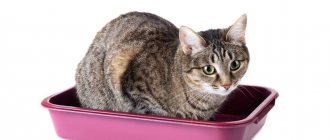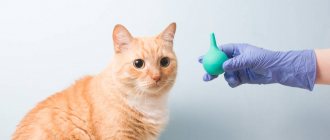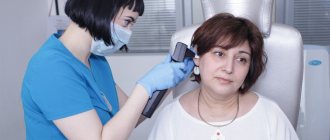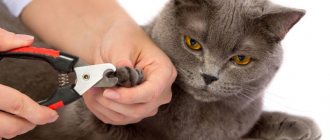8027Pavel
1
In cases of serious illness, all pets require medical attention. And often it has to be provided at home. If it is necessary to give an animal an IV or remove fluid from the bladder, many owners ask questions about how to place and remove a catheter from a cat.
Thanks to this device, it is possible to avoid constant injections. The catheter allows you to give your pet a drip or injection at any time necessary.
© shutterstock
And in the postoperative period or in case of diseases of the urinary system, this device allows you to empty the animal’s bladder of excess fluid completely painlessly.
Why is a catheter placed?
Urinary retention in a cat (obstruction) is the result of plugs of inflammatory material, mucus, crystals, small stones that have formed in the kidneys and entered the bladder. The causes of inflammatory materials and stone formation are not fully understood.
The obstructive structure in pets is a sandy plug of mucus and sand that forms in the bladder over time. Pets may experience difficulty urinating regardless of age. The anatomy of the end of the cat's urethra is narrow. As the condition progresses to complete blockage of urine, the symptoms become more intense.
If left untreated, urinary blockage will cause kidney failure and death within 24 to 48 hours. To save a life, it is necessary to immediately insert a catheter into the cat. The dimensions of the device depend on the size and gender of the pet. In males, the penile area is trimmed with a surgical blade.
The medical device is used by veterinarians to flush the bladder or administer quick-acting medications. The doctor will prescribe an x-ray to confirm inflammation of the excretory system and identify stones that contribute to the obstructive process.
Further studies with catheterization:
- Imaging of the urinary tract.
- Pressure measurement (urodynamics).
- Determination of the width of the excretory canal.
After the therapeutic procedures, the doctor will prescribe treatment and tell you how to put an IV in your cat.
Vaccines: when should a cat be given?
Vaccination is an important part of caring for your pet.
Vaccinations help strengthen the animal’s immunity, as well as protect it and the owner from serious diseases that can lead to the death of the furry pet.
Vaccination is also necessary before traveling and traveling, visiting exhibitions and shows where contact with other pets is possible. Vaccinations will also be required before mating to ensure the birth of healthy and active kittens. Animals, just like people, have a vaccination schedule, which every owner who wants the animal to be healthy is obliged to follow.
Indications for catheterization
Inflammation of the kidneys and intestines are the main indications for catheterization. A blocked bladder increases potassium levels (hyperkalemia), which affects the heartbeat and can lead to the death of your pet. Once a urinary obstruction is identified, emergency treatment and stabilization are required.
Catheterization is performed for:
- Diagnosis of urolithiasis.
- One-time urine collection for analysis if excretion through cystocentesis is not possible.
- Inclusions of contrast agent during examinations.
- Obstruction therapy.
If your cat has chronic kidney disease, the urethra may need to be dilated. This procedure is designed to provide a permanent opening that allows crystals, mucus plugs, or small stones to pass out of the urethra.
In most cases, a dose of general or local anesthesia is administered before the procedure. Infection of the renal pelvis, kidney stones, and chronic renal failure are possible consequences of recurrent urethral obstruction.
How is it carried out?
In order to protect a cat from rabies, the first vaccination is carried out at the age of 12 weeks or a little later. As a result, the animal develops immunity that lasts for one year. To ensure reliable protection against rabies, vaccination is required annually.
It is recommended to reuse the vaccine from the same manufacturer. It is important to pay attention to how the pet tolerates the procedure . If it responds well to the vaccine from this particular manufacturer, then it makes sense to use it regularly. In the event that problems arise with vaccinations, it makes sense to consult a veterinarian about using another option.
After the injection, quarantine occurs for 14 days. During this period, the animal develops immunity. At this time, it is necessary to ensure that your pet appears on the street as little as possible and has contact with other animals. During the time when immunity is developed, the cat’s body is weakened and very vulnerable.
ATTENTION! If the procedure is performed in a veterinary clinic, this reduces the risk of adverse effects.
It is not recommended to leave immediately after the injection. It is better to wait 20 minutes to check for an allergic reaction. In this case, specialist help can be obtained immediately.
Technique
If pathological processes are detected in an animal, it may be necessary to rinse the bladder. The doctor will perform the procedure as follows:
- To relieve pain, the male needs sedation or general anesthesia. Clinicians use local aerosol analgesics (Lidocaine Asept (spray), Carmolis).
- Sterile lubricant is placed on the tip of the tube. An atraumatic tip lubricated with a synthetic lubricant is inserted into the lumen of the urethra. If the device cannot pass through the excretory duct, the veterinarian will drain the animal's bladder by placing a needle on the outside and releasing the urine using a syringe.
- Once the first 2 cm of the catheter is in the penile urethra, the non-dominant hand is used to pull the preputial opening caudally to continue insertion of the tube.
- When regulating water and electrolyte metabolism in an animal, parenteral fluid therapy is performed. The infusion volume is 45-68 ml of crystalloid per kilogram of body weight over 30 minutes.
- Removal of obstructive materials is carried out using solutions that destroy plugs and mucus clots.
- Surgery may be required to remove stones from the organ to prevent inflammation from recurring.
- When the device completely enters the excretory channel, liquid begins to be released from the tube. The clinician determines the condition of the organ by color, consistency and smell.
- Blood clots are eliminated using a solution of novocaine.
- Cats with life-threatening arrhythmias secondary to hyperkalemia are treated immediately with sodium bicarbonate (stimulation of intracellular potassium metabolism) or calcium gluconate (stabilization of the heart and changes in threshold potential).
If necessary, leave the instrument for several days. The veterinarian prescribes medication and diet therapy at home.
Reasons for the appearance of a lump after vaccination in the clinic
Vaccination of a cat
Veterinary clinics value their own reputation, therefore they follow the rules for transporting and storing biological products. Only clinically healthy animals are vaccinated. Advise owners on what to do if complications arise.
They report what precautions should be taken until the immune system produces antibodies in a concentration capable of protecting the animal from infectious agents.
However, even then, the cat may develop bumps for the following reasons:
- Features of the biological product - when the instructions suggest intramuscular administration, a swelling may form at the injection site, which goes away on its own in 3-14 days. You should not start self-medication, since the functioning of the immune system is disrupted. If the owner seems that the formed swelling does not go away for too long, it is necessary to contact the veterinarian who administered the vaccination.
- Features of the cat: individual reaction to the components of the drug. Sometimes an allergy to repeated administration is possible. To strengthen the immune system, kittens are injected with the biological product again after 2-4 weeks. When administered for the first time, the immune system remembers the enemy, and the next time it appears, it takes measures to destroy it. At best, a lump forms; at worst, an allergic reaction like anaphylactic shock develops. The immune system is vindictive. It can also provoke a reaction when an adult cat is revaccinated a year after the previous one.
- Development of a malignant tumor. Post-vaccination sarcoma, also known as Post-injection sarcoma. The tumor is called vaccine-associated sarcoma (VAS) because it begins to grow after the use of vaccines containing aluminum hydroxide as an adjuvant. In cats, this is a vaccine against rabies or leukemia. According to statistics, 1 animal in several thousand gets sick. The reasons for the start of the oncological process are not fully understood. Vaccination results in a shake-up of the immune system, which accelerates the formation of tumors in predisposed cats. There is a hypothesis that some animals have a genetic predisposition to this cancer. This is subject to the fact that some cats from the same litter at different ages develop these problems. The neoplasm occurs at the injection site or another part of the body. The owner notices her a few months after vaccination. However, the influence of another pathological factor, any other injection, cannot be excluded. But the concerned owners linked the cause of the disease to vaccination.
Be sure to read:
A cat sneezes: causes, symptoms, what to do, treatment methods, what should alert you
Mark on the page of the veterinary passport.
Despite following the rules for cat immunization, swelling may form at the injection site, which most often goes away on its own without any treatment.
Catheter care rules
An indwelling urinary catheter is a flexible plastic tube that is inserted through the opening of the urethra to drain urine. The instrument is held in place by a small balloon, and prolonged catheterization is often performed. Only a veterinarian can place the tube correctly.
Home care:
- Check the area around the urethra for inflammation or signs of infection, such as irritated, swollen skin where the tube was inserted.
- The drainage bag should be placed below the level of the bladder.
- Clean the area around the drainage tube twice a day.
- The catheter and drainage tube should not be bent.
- The product must not be left open.
- Empty the liquid collection bag promptly.
- In case of contamination, rinse the device with warm boiled water.
The connection of the catheter to the sterile drainage system creates a closed system that cannot be opened. Antibacterial drugs will help to avoid infection by reducing the likelihood of developing an infection. Improper removal of the medical device may result in injury to the animal's excretory system. To avoid this, you need to know how to remove a cat's catheter.
Catheterization: how to behave at home?
Most of us have seen patients in the hospital walking around with a bag of urine hanging on a stand. But in most cases they leave the hospital without it. However, sometimes the healing process after surgery or injury takes a long time, so patients are discharged home with a catheter. How do they live with it every day?
In principle, patients with a catheter can lead a normal life, that is, do light exercise, walk around the house, go for a walk or even go to work (the urine bag can be attached using special Velcro straps to the inner thigh).
Fixation of the catheter
However, if you have such a device, you need to get plenty of rest and remember to follow a few rules:
- First of all, you need to be careful with hygiene. Wash your hands thoroughly with soap and water before emptying the bladder or replacing it with a new one. It is also important to take care of intimate hygiene by washing the perineum and the outside of the catheter at least once a day with soap and water to prevent the migration of microorganisms into the urinary tract.
- For the same reason, you should not unnecessarily disconnect the bag from the drain hole.
- It is necessary to empty the urine bag regularly because urine is a good breeding ground for microorganisms.
- People with a catheter should drink more, preferably disinfectant herbal infusions, drinks rich in vitamin C, such as blackcurrant juice, cranberry juice. Low urine pH limits the growth of microbes.
Caring for the animal after catheterization
After completing the manipulations, the veterinarian will examine the condition of the tube. If kinks or dents are detected in the system, there is a possibility of injury. The dye used in the procedure is excreted from the body by the kidneys. Antispasmodics are prescribed to relieve unpleasant symptoms.
At home, care involves observation. Before increasing the daily amount of fluid consumed, you should consult a veterinarian, because... the animal may have problems urinating. A burning sensation in the urethra occurs when urine is released the first few times. If your pet's discomfort lasts longer, it is a sign of infection. Post-obstructive diuresis is a common complication requiring immediate hospitalization.
To diagnose the causes of discomfort and examine your pet, you need to call a doctor at home.
All information posted on the site is provided in accordance with the User Agreement and is not a direct instruction to action. We strongly recommend that before using any product, you must obtain a face-to-face consultation at an accredited veterinary clinic.
Vaccination options for cats
Vaccine for cats
Responsible cat owners expect to travel with their pets by car, plane, train, participate in expert exhibitions, and export their pets abroad. In this case, they visit the clinic.
The veterinarian conducts a clinical examination, asks the owner when the pet was dewormed, at what time the fleas were expelled and what medications were used. They check the age of the cat, whether it has been vaccinated before and what biological products were used. They make a note in the passport, certify it with a seal, put down the date and name of the veterinarian who performed the vaccination.
Amateurs who do not intend to exhibit, try to save money, purchase a biological product and inject it themselves. In both the first and second cases, there is no absolute guarantee that swelling will not occur after vaccination.
But if in a professional veterinary institution the cat owner can count on help, then when he pierces the vaccine himself, he solves the problem on his own or for an additional fee.
Types of complications
After vaccination, your pet often experiences temporary complications. They can be expressed as follows:
- an allergic reaction to the injection . It can be expressed, in particular, in the form of swelling, redness, and skin rashes. In such cases, an antihistamine is additionally administered. In extremely severe cases, anaphylactic shock may occur.
- may appear under the skin at the withers in the form of a small bump. The reason may be unprofessional administration of the vaccine or the individual characteristics of the animal’s body.
- Reduced immunity during the quarantine period increases the likelihood of other diseases or the appearance of worms.
- Sometimes vaccination can contribute to the manifestations of kidney failure. This is due to the fact that the vaccine is made from cat kidney cells. Once in the body, it can cause the formation of antibodies that act on this organ. The main cause of this complication is too frequent vaccination.
When a pet suffers during vaccination, a loving owner is obliged to do everything possible to support the animal and alleviate its suffering.
Prevention
In order to minimize the risk of a cat developing a bump after vaccination or other complications, you need to adhere to the following rules:
- In order to get vaccinated, you need to contact a specialist and carry out this procedure in a veterinary clinic.
- When choosing a vaccine, be sure to check its expiration date. If it is not suitable, such a drug cannot be used.
- Although vaccination must be carried out at a certain time, you need to ensure that the animal is not sick at this time and does not have worms.
- When carrying out, it is necessary to remember that immunity exists for a limited period of time. In order for an animal to be safe from rabies infection, it is necessary to vaccinate regularly and do it at a certain time.
- After completing the procedure and during quarantine, you should not wash your pet or expose it to hypothermia.
- It is necessary to plan the procedure in such a way that it is not carried out for kittens during teething, or for adult cats during pregnancy.
After the animal has received the vaccine, it is important to monitor its condition and pay attention to any problems that arise (a wound appeared at the injection site, a lump formed, the cat was vomiting, or others). It is advisable to consult a veterinarian in such situations.
Regular vaccination will protect your pet from the risk of contracting rabies. However, the procedure can sometimes cause complications in the animal. In this case, the owner must take the necessary measures to help his cat.










